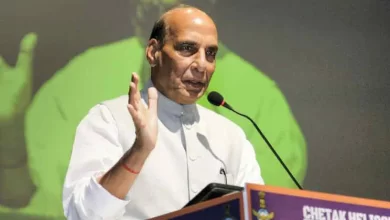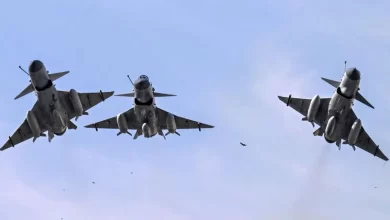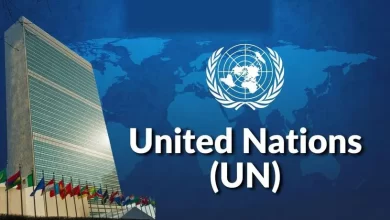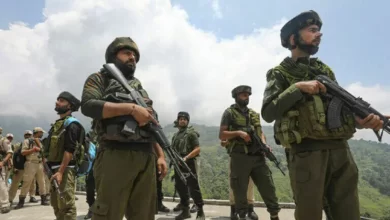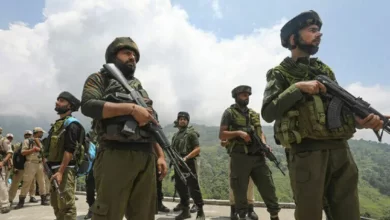Putin hasn’t forgiven Gorbachev yet

The last leader of the erstwhile mighty Soviet empire, Mikhail S. Gorbachev passed away on 30th August 2022 at the ripe age of 91 in a hospital in Moscow. The former General Secretary of the Communist Party of Soviet Union (1985-90) and President of the USSR (1990-91) was the de-facto ruler of the country and is rightly remembered as a leader of global stature who was instrumental in bringing about a revolutionary change in world order. But arguably Gorbachev is not rightly judged when he is accused of presiding over the demise in 1991 of an advanced nuclear power namely the Soviet Union.
In order that the younger generations are able to understand Gorbachev, his policies, successes and failures in the right perspective a quick peep into the defining moments of the history of those years is called for.
By the time Gorbachev rose in power to become the General Secretary of CPSU at a relatively young age of 54 , the USSR had attained the stature of a global super nuclear power next only to or perhaps at par with the USA. In the preceding years, the USSR had undergone a complete political, economic and social transformation and the society had attained a distinct Soviet identity in several aspects. However, a strong sense of deprivation, craving for the glitter and glamour of the West, and suppression of basic freedoms prevailed at grassroots levels.
It was against the above backdrop that Gorbachev’s unveiled “Perestroika” and “Glasnost”. Perestroika (restructuring) was meant to open up the Soviet economy, provide incentives to private initiative and entrepreneurship and to integrate with global economy to the extent possible. The idea of “Perestroika” was in tune with the trends of globalisation gaining momentum in those years. Gorbachev’s “Glasnost” was intended to create opportunities for the freedom of expression for individuals, media and institutions for a society which had suffered enormously due to suppression of dissent at the hands of the authorities, particularly during the regime of Stalin when millions lost life for opposing the system.
The gradual democratisation of political system and transformation of state-controlled economy to market economy were thus the overall objectives of the twin reforms of Perestroika and Glasnost.
Unfortunately from Gorbachev’s perspective, there was an unintended fallout from Perestroika and Glasnost. Perestroika ran into difficulties as Gorbachev did not put in place a road map or a new viable framework before advocating the reform of existing state-controlled economic structures. Further, Glasnost led to the resurgence of suppressed nationalism in various parts of the USSR resulting in aspirations for cessation from the USSR and declaration of independence.
It is pertinent to point out that Gorbachev was opposed to the idea of cessation and separatism and wanted to preserve the Soviet Union, albeit in a renewed and reformed version where the constituent Republics were assured greater sovereignty. In an address to the nation in February 1991, Gorbachev was reported to have said “It is my deepest conviction that the union must be preserved”, and that “Separatism will doom people and destroy their lifestyles.” He even gave a veiled warning that “those who secede will doom themselves to failure.”
However, much to the disliking of Gorbachev, the nationalist movements in Soviet Union culminated in the declaration of independence by the three Baltic Republics—Estonia, Lithuania and Latvia—in March, 1991 and there were signs of other Republics moving in the same direction. This posed a serious threat to the survival of the Soviet Union.
Against this backdrop and also in order to appease the conservative forces in CPSU, Gorbachev made an attempt to preserve the Union as a reformed federal structure. A nation-wide referendum was held on March 17th, 1991, in which the voters were expected to say Yes OR No to the question: “Do you consider necessary the preservation of the Union of Soviet Socialist Republics as a renewed federation of equal sovereign republics in which the rights and freedom of an individual of any nationality will be fully guaranteed?”
Six Soviet Republics, including Armenia and Georgia from the South Caucasus and Moldavia as well as three Baltic republics—Latvia, Lithuania and Estonia — did not participate. Over 80% of the Soviet adult population (148.5 million people) took part in the referendum, and of them 76.4% voted “yes.” This indeed was a moral victory for Gorbachev and a strong mandate for him to reconstitute the Union in a reformed format. On 23rd April, 1991, Gorbachev met at Novo-Ogarevo, a village near Moscow, the leaders of the nine Republics who had participated in the referendum and set into motion the process of drafting a new Union Treaty. (This process came to be known as Novo-Ogarevo process.)
According to the negotiated text of the Treaty, the Union of Soviet Socialist Republics was to be replaced by the Union of Soviet Sovereign States. Article 1 of the Treaty read: “Each republic party to the treaty is a sovereign state. The Union of Soviet Sovereign Republics (USSR) is a sovereign federal democratic state, formed as a result of the association of equal republics and exercising state power within the limits of its powers, which are voluntarily vested in it by the parties to the treaty.”
However, the Treaty could never be signed as the events were overtaken by the abortive coup plotted by the conservative communists against Gorbachev, hours before the scheduled signing of the new Treaty on 20th August 1991. Gorbachev was put under house arrest but released after a short while as the coup failed but he emerged from this episode as a weak leader. He resigned as General Secretary of CPSU on 24th August 1991.
Soon the power centre shifted towards Boris Yeltsin, the President of the Russian Soviet Federative Republic, who had displayed enormous courage in challenging and aborting the Coup. He did not pursue the idea of a reformed Union and instead took his own proposal to a logical conclusion with the signing on 21st December, 1991 of Alma Ata Declaration on the establishment of the Commonwealth of Independent States. The resignation of Gorbachev four days later as President of the USSR on 25th December, 1991 was a mere formality. It is difficult to say what would have been the fate of the truncated new Union, had there been no coup on 18th August, 1991.
In a nutshell Gorbachev was a well-intentioned reformist but failed to realise his dream of a reformed Soviet Union. One may also call him an Utopian who wanted to reconstitute the USSR as a Union of independent States and then preside over it as a super President.

